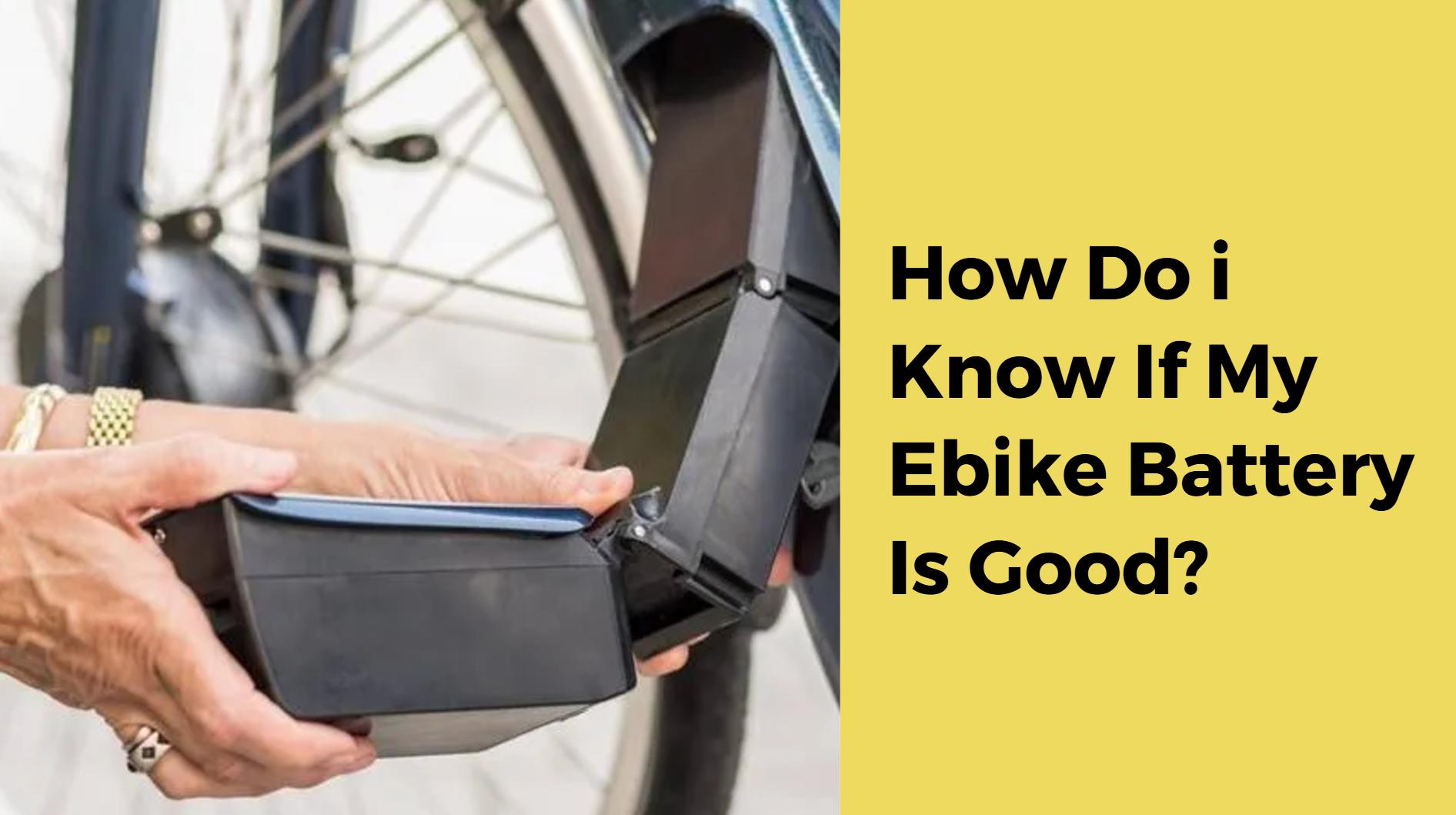
How Do I Know If My Ebike Battery Is Good?
To determine if your ebike battery is in good condition, look for signs such as reduced range, overheating, or swelling. You can also perform tests using a multimeter to check voltage and current levels. Regular maintenance and monitoring will help ensure optimal performance and longevity.
What are the signs of a bad eBike battery?
Several indicators suggest that your ebike battery may be failing:
- Reduced Range: If your bike’s range has significantly decreased despite full charging, it may indicate a declining battery.
- Overheating: Excessive heat during charging or use can signal internal issues.
- Swelling or Physical Damage: Any visible deformation or leakage is a clear sign that the battery is compromised.
- Inconsistent Power Delivery: If the bike struggles to maintain speed or power, it may be due to a weak battery connection.
Recognizing these signs early can help prevent further damage and ensure safer riding.Signs of Battery Failure Chart
| Sign | Description |
|---|---|
| Reduced Range | Noticeable drop in distance per charge |
| Overheating | Excessive heat during operation or charging |
| Swelling | Physical deformation indicates damage |
| Inconsistent Power Delivery | Difficulty maintaining speed or power output |
How can you test your eBike battery health effectively?
Testing your ebike battery involves several steps:
- Charge Fully: Ensure the battery is fully charged before testing.
- Use a Multimeter: This tool measures voltage, current, and resistance.
- Check Voltage: Set the multimeter to DC mode and measure the voltage at the terminals. Compare this reading with the specifications in your manual.
- Test Current: Measure how much current flows when under load; this indicates how well the battery delivers power.
Following these steps will provide a comprehensive assessment of your battery’s health.Testing Procedure Chart
| Step | Action |
|---|---|
| Charge Fully | Ensure 100% charge before testing |
| Use Multimeter | Measure voltage and current |
| Check Voltage | Compare readings with manual specifications |
| Test Current | Assess power delivery under load |
What tools do you need to check your battery?
To effectively check your ebike battery, you’ll need:
- Multimeter: Essential for measuring voltage, current, and resistance.
- Battery Charger: To ensure the battery is fully charged before testing.
- Safety Gear: Gloves and goggles for protection against potential hazards during testing.
These tools will help you accurately assess the condition of your ebike’s power source.Essential Tools Chart
| Tool | Purpose |
|---|---|
| Multimeter | Measures voltage, current, and resistance |
| Battery Charger | Ensures proper charging before testing |
| Safety Gear | Protects against electrical hazards |
How do voltage and current readings indicate battery health?
Voltage and current readings provide critical insights into your ebike’s battery health:
- Voltage Reading: A fully charged lithium-ion ebike battery should read close to its rated voltage (e.g., 36V for a 36V system). A reading significantly below this indicates potential issues.
- Current Reading: This shows how much energy is being delivered. If it’s consistently low under load compared to specifications, it suggests that the battery may not be able to provide sufficient power.
Regularly checking these readings helps maintain optimal performance.Voltage and Current Readings Chart
| Reading Type | Healthy Range |
|---|---|
| Voltage | Should match rated voltage (e.g., 36V) |
| Current | Should meet specifications under load |
What are the common symptoms of battery failure?
Common symptoms indicating that an ebike battery may be failing include:
- Rapid Discharge: The bike runs out of power much faster than usual.
- Frequent Overheating: The battery becomes excessively hot during use or charging.
- Inability to Hold Charge: The battery fails to reach full capacity even after extended charging periods.
- Physical Damage: Visible cracks or swelling in the casing.
Identifying these symptoms early on can help prevent complete failure and ensure safe operation.Symptoms of Battery Failure Chart
| Symptom | Description |
|---|---|
| Rapid Discharge | Quick depletion of power during rides |
| Frequent Overheating | Excessive heat generation |
| Inability to Hold Charge | Fails to charge fully |
| Physical Damage | Cracks or swelling indicating internal issues |
How can you prolong the life of your eBike battery?
To extend the lifespan of your ebike battery, consider these best practices:
- Avoid Deep Discharges: Try not to let the charge drop below 20%.
- Store Properly: Keep batteries in a cool, dry place away from extreme temperatures.
- Regular Maintenance: Periodically check connections and clean terminals to prevent corrosion.
- Use Smart Chargers: These chargers automatically adjust settings based on the state of charge, preventing overcharging.
Implementing these practices will help maximize both performance and longevity.
Industrial News
The electric bike market continues to expand rapidly, with advancements in lithium-ion technology improving both performance and safety. Recent reports highlight new developments in smart batteries that offer better diagnostics for users, allowing for more accurate assessments of their condition. As manufacturers focus on enhancing durability and efficiency, consumers are encouraged to stay informed about best practices for maintaining their ebike batteries.
Lithium Battery Manufacturer Insights
“Understanding how to monitor and maintain lithium batteries is crucial for maximizing their lifespan,” stated an expert from a leading lithium-ion manufacturer. “By employing proper testing methods and adhering to best practices, users can significantly enhance their riding experience while ensuring safety.”
Know more:
Are All E-Bike Batteries the Same?
How Do I Know If My Ebike Battery Is Good?
How to Choose the Right Bike Battery for Your Electric Bicycle
Which E-Bike Battery Lasts the Longest?
